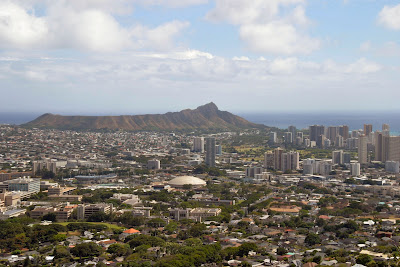
Thursday, March 20, 2008

View of Ford Island, situated in the middle of Pearl Harbor, Hawaii. The ship on the left is the USS Missouri, the battleship on which the Japanese surrender during World War II was signed.
The tower to the right of "Big Mo" is the control tower at Ford Island Naval Air Station.
The white structure on the right side of the image, the one with the boat headed towards it, is the USS Arizona Memorial. On the morning of December 7th, 1941, the Japanese military launched a surprise attack on Hawaii, focusing most of it on Pearl Harbor. USS Arizona took a direct bomb hit that caused massive fire and explosion that destroyed the ship and killed 1,177 of the 1400 crew. Some 900 of those sailors are entombed in the her sunken hull. A memorial spans the bridge of USS Arizona, a solemn reminder to all who visit: Americans, Japanese and people from every other nation, of the tragedies of war and the sacrifices that are made by all who serve their country.


Another phoot of Hanauma Bay. The dark areas are rocky and the light areas are sand. To the left is a reef and beyond that, the water drops off until it is about 200 feet deep near the entrance to the bay. The bay itself is a volcanic crater that collapsed several thousand years ago, allowing the sea to enter and create what you see here.













